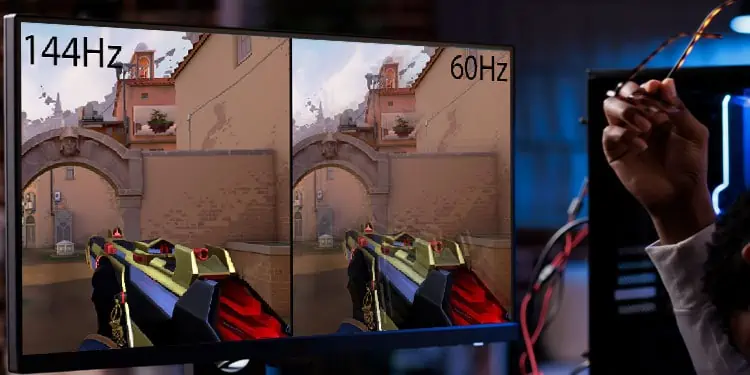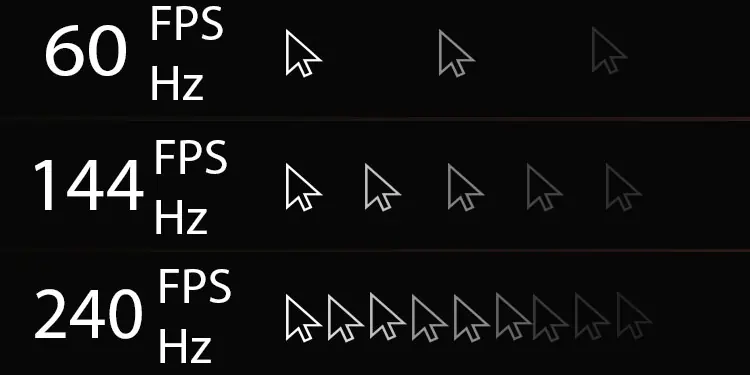If you are just getting into monitor and graphics card, you may have often heard the terms Refresh Rate and Frame Rate. Both these terms represent the number of frames you see per second. The refresh rate depends on the monitor, whereas the frame rate relates to the GPU.
The refresh rate is the maximum number of frames a monitor can display per second. On the other hand, frame rate means the number of image frames the GPU sends to the monitor per second.
This is where confusion begins for most readers. The above definition may not make much sense if you are completely new to the topics, refresh rate, and frame rate. This article explains both the topics and their differences in further detail.

What is a Refresh Rate?
Before we jump into the definition of refresh rate, first, you should know how LED lights on a monitor work. A computer sends data from the frame buffer to the monitor. This data, generated by the CPU or the GPU, contains the stream of pixel color information.
Your monitor sets the RGB details(Red, Green, and Blue) for each pixel using the data received from the PC. Once the video data changes, the monitor will also need to refresh and adjust RGB on each pixel.
In technical terms, the number of times a single pixel can refresh its RGB intensity in one second is a pixel’s refresh rate.In simpler terms, the refresh rate is the number of times a monitor can refresh an image per second. Arefresh rate of a monitoris measured in Hertz.

For example, let us consider a monitor with 60 Hz. This monitor can display up to 60 frames in one second. However, this number also depends on your system’s GPU. The monitor, although 60Hz, will not be able to refresh 60 frames in a second if your system’s GPU is not powerful enough to supply 60 frames in a second.
However, if a powerful GPU can supply more than 60 frames, say 144 frames in a second. The monitor, being limited to 60 Hz, can only display 60 frames. Here, the monitor cannot show the remaining 84 (144-60) frames.
What is a Frame Rate?
Before we talk about frame rates, it is imperative that you know how a computer processes images. The CPU sends data to the GPU (Graphics Processing Unit), which processes this data and generates a series of still images.

Every still image is called a frame which consists of information for the display unit as to how the pixels need to light up.The brightness of the pixels, the color of an individual pixel, and so on.
The GPU then sends frames to the monitor per second. The monitor then displays these frames one after another, creating a visual output. Several fast-changing frames of images are played to create a sense of motion on the screen of the display unit.
Frame rate or Frames Per Second (FPS) is the number of frames that the GPU sends to the monitor. The frame rate entirely depends on how powerful of a GPU you have and the amount an application generates.

Most video files play 24FPS. This means that the monitor is displaying 24 images in one second, creating an illusion of objects moving. Certain games or applications are known to support high FPS, ranging from 60FPS to a massive 200+FPS, giving a seamless transition for the changing objects.
